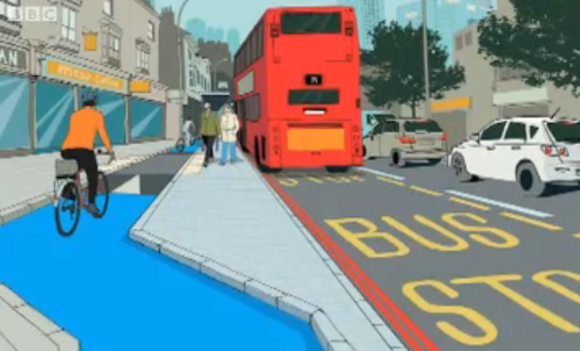When it comes to urban transportation policy, Americans often look longingly across the Atlantic. Paris pioneered big-city bike-sharing, London showed New York that congestion pricing works, and Sweden set the goal of eliminating traffic deaths. But here's a case where New York is leading a peer city overseas.

In 2009, London Mayor Boris Johnson unveiled a plan to install 12 "cycle superhighways" criss-crossing the capital. But Londoners found the new bikeways wanting: narrow painted bike lanes on high-traffic streets, without any protection from passing drivers. One of the cycle superhighways runs across a busy roundabout in East London that's been the site of two cyclist fatalities since the route was installed.
Not surprisingly, the lanes have a poor reputation, and the number of people riding bikes in London last year fell for the first time in a decade.
Transport for London recently announced that it would install a protected bike lane on the East London roundabout approach. Though advocates want additional tweaks, the plan is a shift in policy. "You can expect to see more of these designs across the capital," explained BBC reporter Tom Edwards, though a TfL official cautioned that the protected lanes will not be everywhere, particularly in central London.
While Dutch and Danish cities are still way ahead of London and NYC, it seems like NYC DOT's protected bike lane designs are now the object of some international envy. The proposal is "the first time I've seen anything even vaguely close to catching up on what's already common-place in New York," wrote Danny Williams at Cyclists in the City, a London bike blog.
The protected bike lane proposed in London will include an element we haven't seen yet in New York: a bikeway that runs between the sidewalk and a "floating" bus stop. On streets with major bus routes and protected bike lanes, NYC DOT has opted to put bikes and transit on opposite sides of the street. First Avenue has this configuration even though it leads to more conflicts between cyclists and turning traffic (there are more drivers turning left, across the bike lane, than turning right). It will be interesting to see how the floating bus stop works out for London, and whether it becomes a treatment in the New York City toolbox too.





